
Bald Cypress, courtesy Marilyn Kircus
Take advantage of our new stock of very choice container-grown trees, just being brought out for sale! (like the Bald Cypress pictured here). We have grown these hardy, Colorado-adapted trees organically at Harlequin’s Gardens from bare-root stock, and they are potted in large containers – from 5 to 15 gallon pots. They are in our own nutrient-rich, special potting mix with mycorrhizae. They will make an impact in your landscape quickly.

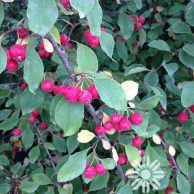
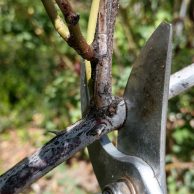 We recently passed Boulder Valley’s “average last frost” date (May 9).With all this rain, it sure feels like Spring! Lots of gardeners are asking if it’s safe to prune now, especially roses and shrubs. The answer is YES! But…..
We recently passed Boulder Valley’s “average last frost” date (May 9).With all this rain, it sure feels like Spring! Lots of gardeners are asking if it’s safe to prune now, especially roses and shrubs. The answer is YES! But….. We propagate and grow a lot of great plants here at the nursery, which gives us (and you!) an advantage when the wholesale suppliers run short in mid and late summer. We’re very pleased to have beautiful stock of some highly desirable and hard-to-find shrubs and perennials right now, including some choice native plants, Plant Select® winners, and customer favorites.
We propagate and grow a lot of great plants here at the nursery, which gives us (and you!) an advantage when the wholesale suppliers run short in mid and late summer. We’re very pleased to have beautiful stock of some highly desirable and hard-to-find shrubs and perennials right now, including some choice native plants, Plant Select® winners, and customer favorites. 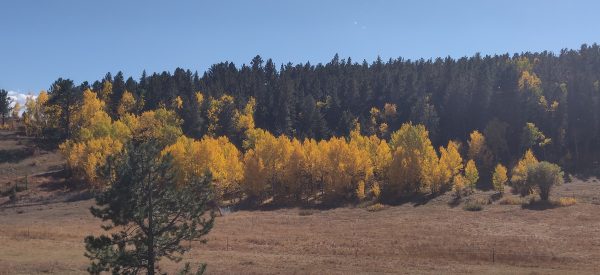
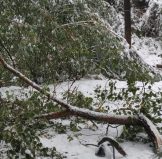 October 2020 went from record high temperatures in the 80s to record lows, 19 degrees by October 25. May 2021 also made some shocking temperature changes. These rapid and dramatic changes can cause woody plants to die back, lose branches or die completely.
October 2020 went from record high temperatures in the 80s to record lows, 19 degrees by October 25. May 2021 also made some shocking temperature changes. These rapid and dramatic changes can cause woody plants to die back, lose branches or die completely.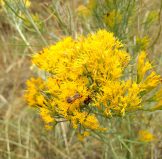 This includes Amorpha, Manzanitas, Mt. Mahoganies, Big Sage, Fringed Sage, Sand Sage, Lilacs, Butterfly Bushes, Pea Shrubs, Gambel Oak, Viburnums, Spireas, Potentillas, Sand Cherry, Rabbitbrush, Fernbush, Mountain Ninebark, Cliff Rose, Lewis Mockorange, Mikl’s Pick Mockorange, Boulder Raspberry, Boxwoods, Cotoneasters, Honeysuckles, New Mexican Privet, Flowering Quince, Ephedra, Euonymus, Sumacs, Currants, Yuccas, and many more!
This includes Amorpha, Manzanitas, Mt. Mahoganies, Big Sage, Fringed Sage, Sand Sage, Lilacs, Butterfly Bushes, Pea Shrubs, Gambel Oak, Viburnums, Spireas, Potentillas, Sand Cherry, Rabbitbrush, Fernbush, Mountain Ninebark, Cliff Rose, Lewis Mockorange, Mikl’s Pick Mockorange, Boulder Raspberry, Boxwoods, Cotoneasters, Honeysuckles, New Mexican Privet, Flowering Quince, Ephedra, Euonymus, Sumacs, Currants, Yuccas, and many more!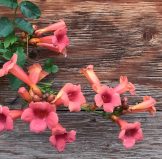
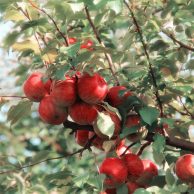 One of our specialties is
One of our specialties is 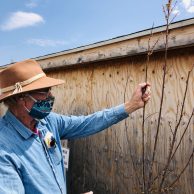 Don’t be in a hurry to prune dead branches on woody plants this spring! Last fall we had warm weather followed by a fast-deep freeze, and this spring we had an 11-degree freeze after some leaves were out. Some branches and some whole shrubs may have died, but most will put out new leaves. So, it is best to wait another couple of weeks before pruning.
Don’t be in a hurry to prune dead branches on woody plants this spring! Last fall we had warm weather followed by a fast-deep freeze, and this spring we had an 11-degree freeze after some leaves were out. Some branches and some whole shrubs may have died, but most will put out new leaves. So, it is best to wait another couple of weeks before pruning. The ancient proverb “March winds and April showers bring forth May flowers” could be revised for Colorado as “March and April heavy snow, freezing temps, and strong winds bring forth May flowers”! And this year was no exception. Two recent cold snaps with temperatures reaching lows of 3 degrees F in our neighborhood, snows up to 36” in the foothills, and winds that will bring down any weak tree branches, wreaked havoc and impacted flower and fruit productivity. So now it’s time to help support our shrubs and trees to recover.
The ancient proverb “March winds and April showers bring forth May flowers” could be revised for Colorado as “March and April heavy snow, freezing temps, and strong winds bring forth May flowers”! And this year was no exception. Two recent cold snaps with temperatures reaching lows of 3 degrees F in our neighborhood, snows up to 36” in the foothills, and winds that will bring down any weak tree branches, wreaked havoc and impacted flower and fruit productivity. So now it’s time to help support our shrubs and trees to recover.